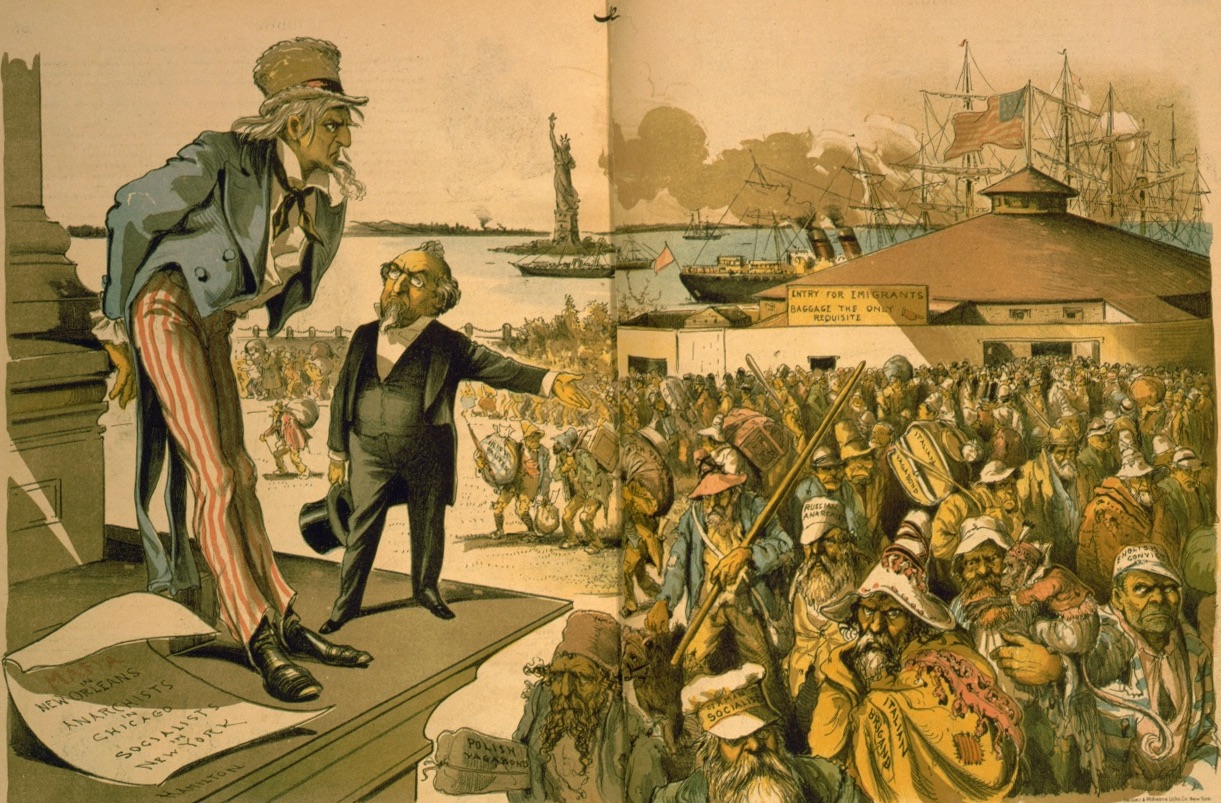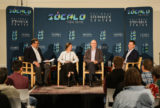
Courtesy of the Library of Congress.
“From the first we have treated our minorities abominably, the way the old boys do the new kids in school,” Steinbeck wrote in “E Pluribus Unum,” an essay in America and the Americans. American identity, the author argued, was forged through this cruel process of hazing the newest, and that once any ethnic group became established, it would pick on the newly arriving group. “It occurs to me,” he wrote, “that this very cruelty toward newcomers might go far to explain the speed with which the ethnic and national strangers merged with the ‘Americans.’” Steinbeck’s view of America calls for us to understand the conflicts that created our nation. How does a country made up of so many different people ultimately cohere? Does America deserve its reputation for being welcoming to immigrants? And do America’s fissures and divisions ever completely go away? Cambridge University historian Gary Gerstle, Stanford University sociologist Tomás Jiménez, and University of Colorado historian and Center of the American West faculty director Patricia Limerick visit Zócalo to examine the enduring tensions between the pluribus and the unum.
1 Main Street
Salinas, CA 93901
The Takeaway
In a Raucous Country, Our Sense of Unity Has Often Emerged Through Conflict
A Diverse Nation, Built on Waves of Immigration, Has Found That Getting Along Is Not Always Easy
Americans of wildly disparate backgrounds have managed to find common ground over the course of the country’s history. But the process of cohering has been haphazard, raucous, messy and cruel, …





